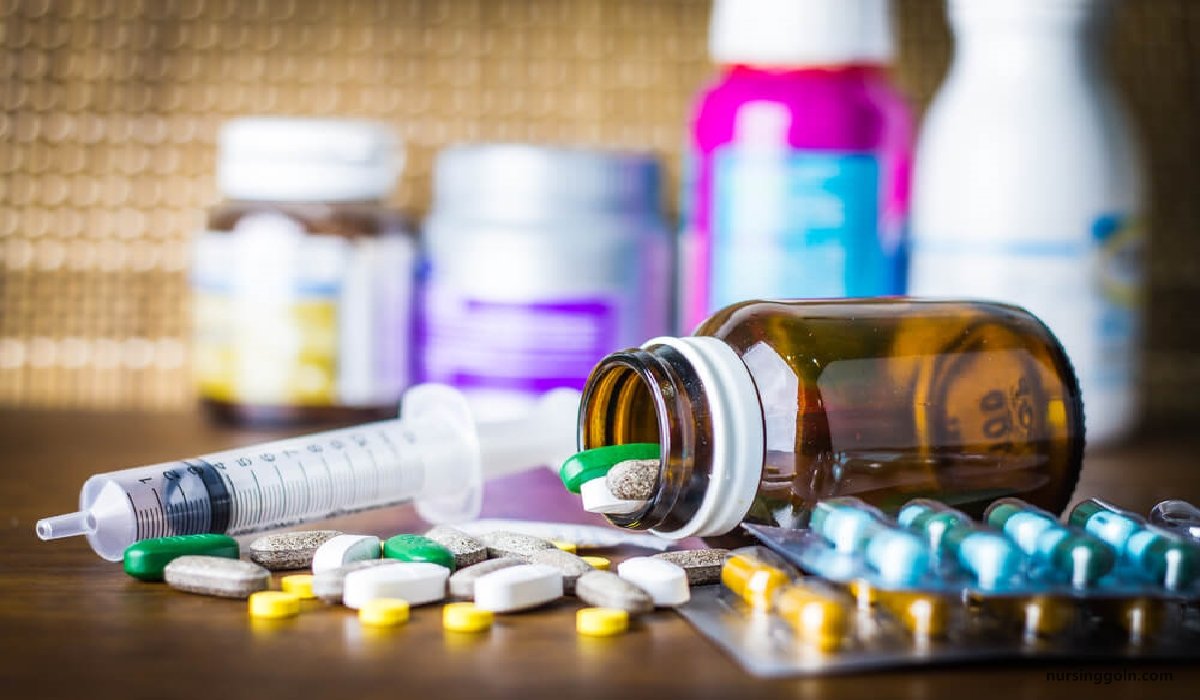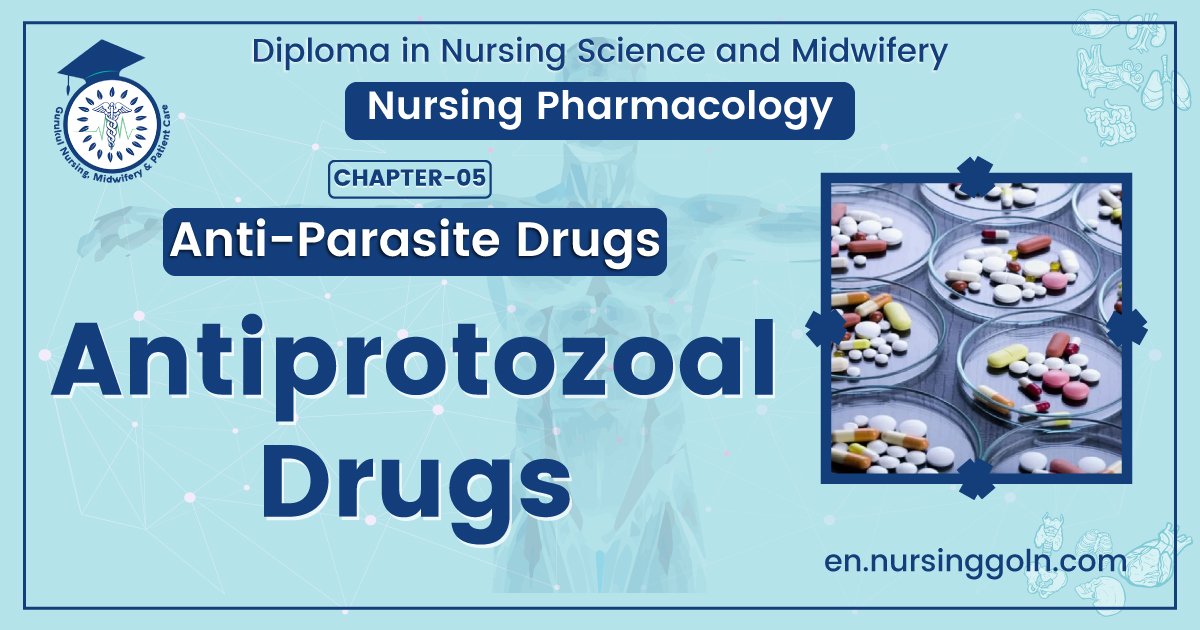Antiprotozoal Drugs – This book covers the entire syllabus of “Pharmacology” prescribed by BNMC- for a diploma in nursing science & midwifery students. We tried to accommodate the latest information and topics. This book is an examination set up according to the teachers’ lectures and examination questions.
At the end of the book, previous questions are given. We hope in touch with the book students’ knowledge will be upgraded and flourish. The unique way of presentation may make your reading of the book a pleasurable experience.

Antiprotozoal Drugs
Classification of antiprotozoal drugs
| Chemotherapy for amoebiasis |
|
| Chemotherapy for malaria |
|
| Chemotherapy of leishmaniasis |
|
| Chemotherapy for toxoplasmosis |
|
| Chemotherapy for trypanosomiasis |
|
Antimalarial Drugs
Malaria is the most important parasitic disease of humans and causes hundreds of millions of illnesses per year. Four species of plasmodium typically cause human malaria: Plasmodium falciparum, P vivax, P malariae, and Povale. A fifth species, P knowlesi, is primarily a pathogen of monkeys but has recently been recognized to cause illness, including severe disease, in humans in Asia.
Although all of the latter species may cause significant illness, Pfalciparum is responsible for the majority of serious complications and deaths. Drug resistance is an important therapeutic problem, most notably with P falciparum.
| Plasmodium vivax | Benign tertian malaria | Relapse |
| P. ovale | Benign tertian malaria | Relapse |
| P. falciparum | Malignant tertian malaria | No relapse |
| P. malariae | Quartan malaria | No relapse |
Anti-malarial drugs are the agents that are used in the treatment of Malaria.
Classification of anti-malarial drugs
| Blood schizontocides: used for clinical & suppressive cure | Chloroquine (first choice) S-P combination (Fansidar) S-Sulfonamides P = Pyrimethamine Quinine or, Quinine + tetracycline M-S-P combination M = Mefloquine S-Sulfonamides P = Pyrimethamine |
| Tissue schizontocides used for causal prophylaxis | Pyrimethamine Primaquine |
| Tissue schizontocides used to prevent relapse | Pyrimethamine Primaquine Proguanil |
| Gametocides | Primaquine. |
| Sporontocides | Primaquine Chloroguanide |

Classification of antimalarial drugs according to chemical structure or groups:
| Chemical Structure/Groups | Drugs |
| 4-Aminoquinolines |
|
| Quinoline-methanol |
|
| Cinchona alkaloid |
|
| Biguanide |
|
| Diaminopyrimidine |
|
| Antibiotics |
|
| Sesquiterpine lactones |
|
| Amino alcohols |
|
| Naphthyridine |
|
| Naphthoquinone |
|

Objectives and Use of Antimalarial Drugs
The aims of using drugs in relation to malarial infection are:
A. To prevent clinical attack of malaria (prophylactic).
B. To treat clinical attack of malaria (clinical curative).
C. To completely eradicate the parasite from the patient’s body (radical curative).
D. To cutdown human-to-mosquito transmission (gametocidal).
Read more:
